
|
|
| www.wildfirenews.com | |
THE COST OF CARELESSNESSDECEMBER 01 -- DULUTH, MN: Daniel Ray Herbert Hunt was sentenced last week to four months in federal prison for starting the Katherine Lake Fire, which took five days to control last May. A report by duluth.com said Hunt was convicted in September for leaving a fire not completely extinguished and for allowing the fire to burn out of control. The Katherine Lake Fire burned north of Forest Highway 11 in Lake County and was contained at 41 acres. The government spent $141,848 in suppression costs. Terry Barton, meanwhile, who started the the Hayman Fire in Colorado in June, will appear in court later this week to change her plea to guilty, according to her lawyer. Barton, 38, was employed by the Forest Service when she started a fire that eventually burned over 100,000 acres -- the largest fire in Colorado's history. CNN reported that Barton faces four federal charges, including arson and injuring a firefighter. She's been free on $600,000 bail since September. In Nevada early in November, 18-year-old David Scott Killen was arrested for setting as many as 10 wildland fires. He was charged with three counts of felony arson, three counts of conspiracy to commit arson, and probation violation. According to the Reno Gazette-Journal, other suspicious fires have been reported in surrounding communities of Carson City, Virginia City, and Alpine County, California. Nine law enforcement and fire agencies are involved in the investigation; Killen was being held on $100,000 bail. Leonard Gregg, accused of starting the 464,000-acre Rodeo Fire in Arizona this spring, was unemployed and hoping for work as a firefighter, according to the Arizona Republic. The Rodeo-Chediski Fire destroyed nearly 500 homes and businesses and forced the temporary evacuation of 30,000 Arizona residents. Gregg, 29, said he didn't expect the fire would get so big, and he asked in a court hearing, "Can I say I'm sorry for what I've done?" He was charged with two counts of setting fire to timber, underbrush, grass, or other flammable material. The Rodeo Fire he started burned into the Chediski Fire, which was started by a lost hiker. The Arizona Republic reported that on July 18 the U.S. attorney for Arizona told an angry crowd at Mogollon High School that stranded motorist Valinda Jo Elliott would not be prosecuted because she did not act with criminal intent when she set a "signal fire" to attract the attention of a news helicopter flying overhead. He said there was no chance a jury would convict her of arson, and that investigators had spent a month interviewing witnesses, checking cellphone logs, and following other leads to confirm every detail of her account. It took $43.1 million control the Rodeo-Chediski, not counting the cost of mop-up and rehab operations. Navajo County counted 491 structures lost, most of them homes, at a minimum cost of $28.3 million. By mid-July, more than 7,800 people had registered with FEMA for assistance. In just a few weeks, FEMA spent $267,500 on disaster housing for victims and, with other state and federal agencies, issued $420,000 in individual and business disaster loans and grants. Arizona's Department of Economic Security approved $600,000 in emergency food stamps to feed nearly 12,000 people affected by the fire, and the DES expected to approve about $30,000 in special weekly benefits for people who didn't qualify for regular unemployment checks but who were left temporarily jobless by the fire. Many others in the area applied for regular unemployment benefits after the fire, causing a 575 percent spike in claims that could hike weekly payouts by $235,000. FOREST SERVICE WANTS TWELVE GRAND FOR ONE-ACRE FIRENOVEMBER 30 -- CEDARVILLE, CA: Residents of this small town just south of the Oregon border are chapped about the $12,000 penalty that Josh Oilar faces for starting a one-acre blaze when he tried to thaw his frozen car battery with a small warming fire. The Sacramento Bee reported that Oilar's case has prompted petition drives and angry letters from Cedarville residents who plan to raise money to help the woodcutter. Oilar, 27, was convicted last month of accidentally starting the fire when he tried to warm up his battery in the cold mountain area. The U.S. Forest Service wants him to repay the suppression costs on the fire, but Oilar says he can't afford it. He is married and has four children. Word spread quickly through the small town in rural Modoc County, and residents started a petition calling for the judge to be lenient on Oilar. About half of the town's 500 residents have signed the petition, which helped to spare Oilar jail time. But U.S. District Court Judge Craig Kellison still sided with the Forest Service, which remains firm about repayment. Oilar's sentencing is scheduled for January 7. TURKEY DAY IN FIRE CAMPNOVEMBER 29 -- RIVERTON, CA: Fire crews spent Thanksgiving fighting wind-driven fires in El Dorado County after 70 mph winds pushed smoldering piles from prescribed fires out of control earlier this week. Several fires originated with prescribed burns on Sierra Pacific Industries lands; the Sacramento Bee reported that the Plum Fire east of Pollock Pines and south of Riverton was the largest of three fires burning in the Placerville district. More than 250 firefighters are on the Plum Fire, which is being managed by Howard Carlson's Norcal II team. The fire, now over 1,800 acres, started at under 100 acres Monday afternoon.
The Union Democrat reported that all outdoor burning was suspended by CDF because of high winds, and the National Weather Service issued a strong wind advisory for the foothills and high country. KXTV-10 reported that fire agencies are faced with a critical shortage of personnel; CDF let go more than 1,500 seasonal firefighters last week. About 500 firefighters spent Thanksgiving on the fires in Calaveras County, according to the Modesto Bee; resources on Wednesday included 32 hand crews and 30 engines. The Chico Enterprise-Record reported today that California's fire season might stretch past Christmas. The Bean Fire near Oroville, 85 percent contained at 250 acres yesterday, was burning in heavy timber. Steep terrain and falling trees were hazards faced by firefighters, but they expected to have the fire contained today. Butte County fire and air quality officials issued a red flag warning yesterday for high winds, low humidity, and dry fuels, and they banned burning throughout the county at least through Monday. "The unseasonably dry conditions and high winds are characteristic of weather patterns seen in late summer and early fall," said Butte County Fire/CDF Assistant Chief Bill Holmes. "This time of year we are are usually responding to house fires, car wrecks, and medical emergencies -- not 250-acre timber fires. It looks like fire season in California is 12 months long." The Bean Fire, which started Tuesday, was also an escape from a timber company's slash burning operation. Investigators said high winds came up and spread the fire into nearby timber. More than 600 personnel and 50 engines were on the fire, and crews had a traditional turkey dinner yesterday. FIREFIGHTER JOBS OPEN IN ALASKANOVEMBER 27 -- FORT WAINWRIGHT, AK: Several Type 1 jobs are open in Alaska and applications are being accepted for a hotshot crew based in Fort Wainwright. Positions open include Assistant Superintendent, Squad Leader, and Firefighters. Jobs start in April, but applications should be submitted now. For more information, phone (907)562-4155 or email [email protected] RAILROAD SUES FOR LOSSES FROM FIRENOVEMBER 22 -- DURANGO, CO: The Durango & Silverton Narrow Gauge Railroad is suing two insurance companies and a consultant, claiming multimillion-dollar losses when wildfires forced the railroad to shut down this year during the peak of the tourist season. In a lawsuit filed in La Plata County District Court in Durango, according to the Rocky Mountain News, the railroad said the insurance companies denied its claim by contending the business losses were caused by the La Plata County commissioners when they ordered that operations cease. The railroad claims it voluntarily suspended operation of its coal-fired trains because of extreme fire danger. Losses are estimated at over $4 million this year. The railroad's coal-fired locomotives started numerous fires within and adjacent to the railroad right-of-way over the summer, and the railroad is expected to pay suppression costs for the fires they started before operations were shut down. The Durango Herald reported that the insurance companies refused to reimburse the railroad for revenue lost during the fire season. The railroad says it bought "business interruption insurance," but the insurance companies unjustly declined to reimburse the railroad for revenue lost during the summer. "Our business was interrupted for 27 days this last summer," said Jeff Jackson, the railroad's senior vice president. "We submitted a claim to our insurance carriers and the claim was rejected." Jackson said suppression costs totaled several hundred thousand dollars. BLACK HILLS EXPECTING ANOTHER NASTY FIRE SEASONNOVEMBER 20 -- RAPID CITY, SD: Federal and state officials are preparing for what may be another season of devastating fires in the Black Hills National Forest. Continuing drought has prompted fire managers to add manpower, increase air attack resources, and improve communications, according to a story in the Rapid City Journal. Dave Thom, resources officer for the Forest Service, said another dry winter won't seal the fate of the Black Hills, but if it's dry next spring and if more tree thinning isn't permitted, the outlook could be bleak. And John Twiss, Black Hills National Forest supervisor, says the drought and an overgrown forest could mean more large fires next year. "Our forests are very thick," said Twiss. "Much thicker than they've ever been." State wildland fire coordinator Joe Lowe said firefighting efforts will be more manageable next year when a $1.6 million dispatch center is fully operational. More than 137,000 acres of Black Hills National Forest land has burned in the past three years. There were three major fires this year; the Grizzly Gulch Fire near Deadwood burned 11,589 acres between June 29 and July 7. The Little Elk Fire burned 673 acres in July, and the Battle Creek Fire near Rockerville and Keystone burned 12,450 acres of federal and private land in August. AUSSIE FIREFIGHTERS BARELY GET A BREAKNOVEMBER 19 -- SYDNEY, NSW: Firefighters in New South Wales are preparing for another hot week after a little weekend break; cooler weather helped crews reduce the number of fires burning across the state. "We were able to contain a couple of fires over the weekend with the cooler weather," said NSW Rural Fire Service media officer Meeka Bailey. "We have been able to reduce a number of fires and rest a few crews." Only a few of the fires were breaching containment lines, according to a report by news.com.au and Bailey said there were 42 fires burning across the state. "There is one we have not yet contained in the Shoalhaven region in the Moreton National Park," she said, "but at this point there are no homes or properties in danger." Bailey said between 500 and 600 firefighters were on duty, with more on standby in case conditions worsen. Living Abroad Magazine reported that strong winds fanned more than 100 wildfires in eastern Australia last week with bushfires on the suburban fringes of Sydney. "These fire conditions are the worst we have had in generations," said Bob Carr, the Premier of New South Wales. "That is as serious as it gets." The bushfire season in Australia usually runs from December to February, but fires -- many of them deliberately lit -- have been burning since the winter month of July because of a record-breaking drought. Last year was one of the worst fire seasons on record, with more than 100 homes and 2 million acres burned. "This season may well go down as one of those one-in-a-generation type seasons," said Phil Koperberg, Rural Fire Service Commissioner. Deputy Premier Andrew Refshauge warned arsonists that they would face the consequences of their actions. "Lighting a fire is against the law," he said. "If anyone dies, we will charge you with murder." FOREST SERVICE WON'T APPROVE MEMORIAL SITE FOR PILOTS KILLED ON BIG ELK FIRENOVEMBER 19 -- LYONS, CO: A flagstone memorial created as a tribute to three pilots who died on a fire here last summer hasn't got a home yet. The Boulder Daily Camera reported that Paul Frysig, who created the 6-by-10-foot stone marker, was told by the Forest Service that such memorials are not allowed where Frysig wants to put it -- at the Lion's Gulch Trailhead off US Highway 36. That's the area where airtanker pilots Milt Stollak and Rick Schwartz died when their tanker lost a wing and crashed. It's also near the spot where helicopter pilot Gordon Knight went down during mop-up on the same fire. "The trailhead is a natural place," said Frysig. "People would be able to see it there." But the Forest Service says the agency gets too many requests for memorials to allow any, except in extraordinary circumstances. "It's unbelievable the amount of requests we get on Front Range land," said James Bedwell, forest supervisor for the Arapaho and Roosevelt national forests and Pawnee National Grassland. "People want to erect them for others who got lost and died in the forest or people who have died and loved a certain part of the forest or for this sort of case." The agency held a memorial service at JeffCo Airport for the pilots' families, and another tribute is planned for the spring, when three trees native to the site will be planted in the men's honor. And plaques in memory of the men will be hung in the Pinewood Springs, Big Elk Meadows, and Estes Park volunteer fire departments. But Frysig said an exception should be made. He also said he might choose to illegally place the marker at the trailhead. "I'd hate to do it," he said. "But it just makes sense to walk into the forest and see signs telling you to clean up after yourselves and remember the people who died for the forest." TO REDUCE SUPPRESSION COSTS, REDUCE FUELS LOADNOVEMBER 19 -- GRANTS PASS, OR: A close look at six big wildfires that burned in 2001 indicate there is a little money to be saved on fighting fires once they start, but major savings can be realized by efforts to make forests healthier and rural homes safer. An Associated Press story in the Missoulian reported on a yearlong study by the National Academy of Public Administration -- an independent, nonprofit research organization chartered by Congress. "Fire suppression is more than a one-year, single-incident proposition," said Frank Fairbanks, who served as chairman of the panel that produced the study. "It requires long-term foresight and striking at the root causes of these growing hazards." Fairbanks said until hazardous fuels are reduced, wildfires will get bigger and more and more intense -- and more expensive. Firefighting costs have been growing steadily since the mid-1990s, totaling $1.1 billion in 2000 and $1.4 billion in 2002. The Bush administration responded to this year's fires with the Healthy Forests Initiative, which recommends increased logging to thin dense forests so they are less likely to burn out of control. "This isn't the environmentalists saying this. This isn't the timber industry saying this," said Keith Ashdown, policy analysis for Taxpayers for Commonsense, which has made similar recommendations. "This is an independent panel saying here is a road map to the future. Maybe we can have some bipartisan consensus on this issue." The study's top recommendation is creating a process to set national priorities for federal grants to reduce fire danger around communities and strategically coordinating federal, state, and local efforts rather than allowing each to go its own way. HAYMAN WAS UNSTOPPABLENOVEMBER 17 -- LAKEWOOD, CO: Three years of drought, a tinder-dry forest, and high winds conspired this summer to turn the Hayman fire into the largest wildfire since Colorado became a state. There was no number of firefighters, aircraft, or initial attack resources that could have stopped the fire, which started June 8 near Lake George, burned 137,000 acres, and destroyed 132 homes in four counties. The fire was simply too big, and it ran its course.
Gary Michels, a member of the Colorado Mountain Club, summed it up: "It would take a firebreak a mile wide to stop these kinds of fires because of the drought and the high winds." Congressman Mark Udall of Boulder asked the U.S. Forest Service and the Rocky Mountain Research Station to conduct the study; he hopes the report will help develop a policy framework managing Colorado's forests at a time when environmentalists often contest prescribed burns and the Forest Service can't carry out fuels reduction programs because of appeals and lawsuits. Of the 50 residents interviewed in Woodland Park after the fire, most said they thought a wildfire was bound to occur in the Pike National Forest. They also said they still wouldn't cut down trees around their homes, because it would ruin the beautiful setting, one of their chief reasons for moving to the area. Though that attitude hasn't changed, the Hayman Fire has brought about some other changes. Firefighters are getting more equipment and a revised dispatch system after an analysis of how federal, state, and local agencies responded to the fire. According to a report in the Rocky Mountain News, crews also face tougher training requirements. Next year the Forest Service will require anyone fighting a major fire on federal land to undergo a four-day course for red card certification. Firefighters without red cards could still fight fires on federal land in their department's jurisdiction, but they would not be assigned to major fires outside their jurisdiction. State firefighters have had their equipment resources bolstered; ten new engines were purchased with a $1 million emergency appropriation authorized by Gov. Bill Owens. And some local agencies are getting new gear with money raised in a fund drive by the Colorado Springs-based El Pomar Foundation. In June they established a wildland fire fund, committing up to $5,000,000 for qualifying volunteer fire departments and fire districts. "Our focus is on volunteer and primarily volunteer organizations because they face the greatest challenge in obtaining funds," said Foundation Chairman William J. Hybl. "As a private philanthropic foundation, we are uniquely positioned to offer this help." Firefighting organizations that serve small fire protection districts or rely heavily on volunteer assistance, and/or who have a 501(c)(3) designation are eligible for support through this program. Volunteer fire officials can email [email protected] or call the El Pomar Foundation Wildlands Fire Fund hotline at (719)577-7009 to inquire about assistance. CALIFORNIA EASING OUT OF FIRE SEASONNOVEMBER 17 -- UKIAH, CA: The California Department of Forestry and Fire Protection is transitioning out of fire season in most of the state, except in San Diego, San Bernardino, Riverside, and San Luis Obispo counties.
All CDF units north of Tulare are out of fire season. Seasonal firefighters are being released, dispatch staffing levels are reduced, and some remote facilities are closed or on limited hours. Airtankers will be removed from service, and the S-2s are scheduled for winter maintenance at McClellan in Sacramento. In CDF's San Diego Unit, however, two airtankers and one air attack plane will remain stationed throughout the winter.
CREWS STILL COOLING HOTSPOTS ON COAL SEAM FIRENOVEMBER 16 -- GLENWOOD SPRINGS, CO: More than five months after the Coal Seam Fire ignited in South Canyon, firefighters are still working on hotspots lingering near the ignition source. Using a track hoe and a dozer, a crew contracted by the state Division of Minerals and Geology this week dug through a refuse heap of coal and rock from the nearby South Canyon mine -- where the fire started -- trying to cool the hotspot. And it's a hot hotspot. "If you did a faceplant there, it would be a bad day, a very bad day," said Steve Renner, a project manager with the Abandoned Mined Lands program. "It was probably 800 degrees under the surface." The Aspen Daily News reported that crews were leaving the area upturned and pockmarked for the winter, to help the heated rock cool before they return in the spring to contour the terrain and replant trees. Ignited on June 8 by an underground mine fire that's been burning since at least 1910, the Coal Seam Fire hit dry brush on the surface and took off toward town, chased by high winds. It burned over 12,000 acres and destroyed 29 homes. On the way, it burned across the mine refuse heap, igniting small pieces of coal that littered the pile of shale. Though the hotspot in the pile isn't likely to take off, it could endanger people who might be walking in the area. The pile is about two miles up South Canyon Road, surrounded by twisted scrub oak left blackened by the fire. Glenwood Springs officials asked the state for help, and city firefighters repeatedly filled a 20-foot-long trench with thousands of gallons of water. Crews pushed through about 500 cubic yards of rock -- about 200 pickup-truck loads -- cooling it with the water, then mixing in dirt. In another project next month, crews will drill into the hillside to investigate whether they could use concrete grout to cool the underground fire. PRAIRIE BAND POTAWATOMI NATION FIREFIGHTERS DO THE WESTERN TOURNOVEMBER 16 -- TOPEKA, KS: They go where a job needs to be done, whether it's a wildfire in Colorado or Wyoming, or an ambulance run on tribal land in Kansas. "It's our job," says crewmember John Rodecap. "We are just doing our job." Rodecap is one of 12 members of the Prairie Band emergency services crew on the Potawatomi Reservation in Jackson County. The Topeka Capital-Journal reports that the average age of the Potawatomi crew is about 40, and members average 15 years of firefighting service. Wildland firefighting is their specialty, but the routine work is the emergency services they provide on the Prairie Band Potawatomi Reservation. When members are at their home station on the reservation, the wildland engine crew works with the rest of the emergency services employees. The program provides 24-hour service for all fire suppression, prevention, and emergency medical care on the reservation -- and surrounding areas as requested. Staffing includes 24 personnel: three shift captains, three shift engineers, six paramedics, and 12 firefighter/EMTs. The administrative staff includes the Fire Chief/Director of Emergency Services, Assistant Fire Chief, Battalion Chief, Administrative Assistant, Puchase Order Clerk, and the Paramedic's Captain. Nearly all the staff are nationally certified EMTs, and about 50 percent of the organization is Native American. Rick Swogger recognizes the advantage of EMT training on a wildland fire crew. "A firefighter from a different unit almost cut his toe off while fighting a wildfire in Colorado," he said. "Another firefighter in Wyoming cracked his ribs. We took care of them and saw to it they were out of danger." This season was a busy one for the crew; Joe Morris, the engine boss, pulled 10 tours fighting fires in several states. The Prairie Band Potawatomi wildland crew is available for dispatch to any state in the country. CLEARWATER BOOSTS BURNSNOVEMBER 13 -- OROFINO, IDAHO: Not so long ago, the Clearwater National Forest was lucky to pull off 1,000 acres a year in prescribed burning. This year they did 4,800 acres.
The Clearwater, on the Idaho side of the Bitterroot Mountains, also burned 1,100 acres of logging slash this year, and allowed a backcountry fire to burn 700 acres in the Selway-Bitterroot Wilderness. That's 6,600 acres of fuels treatment, and according to a report by the Missoulian, Dawson hopes for even more next year. "In the early and mid-1990s, the forest was treating less than 1,000 acres per year to remove hazardous fuel," said fuels specialist Steve Harbert. "We've more than quadrupled that this year." And the Clearwater's project list for 2003 includes several projects with significant burning included. WILDFIRE SCOFFLAWS BURN FIRE AGENCIESNOVEMBER 13 -- DENVER, CO: The U.S. Forest Service has been unable to collect millions of dollars from people and companies blamed for wildfires, and it often takes years to collect a fraction of what is owed. According to a report by the Denver Post, the USFS has billed nearly $38 million since 1996 in suppression costs for 75 wildfires in a nine-state area that includes Colorado. But only $4.5 million has been collected -- less than 12 cents for every dollar billed. This has critics wondering how much reimbursement the agency might collect from Terry Barton, the former Forest Service employee accused of setting this year's Hayman Fire, which cost more than $39 million. Forest Service officials point out that people who start wildfires often do not have the resources to pay for their mistakes. "If I billed you $1 million today, would you pay it?" asks Michael Clonts, Regional Acting Director of Financial Management. "Unless we have a court order, such as criminal conviction or a civil lawsuit verdict, we don't have a lot to work with. All we can do is send the bill and hope they'll pay." Forest Service rules allow a number of options for recovering firefighting costs, including lawsuits, referrals to collection agencies, even tracking inheritances a debtor might expect. Some local agencies are more successful at recovering wildfire costs. In Ventura County, California, for example, officials collect money 75 percent of the time. Unlike the Forest Service, the county automatically files a court claim against the person they say is responsible. Of the 10 civil collection cases filed regionally by the Forest Service since 1996, six resulted in settlements and four remain in court. In 1999, the agency concluded a five-year legal fight with the Durango Silverton Narrow Gauge Railroad over a San Juan National Forest fire that cost more than $717,000. The settlement was about $400,000. But in the decade since a 1992 fire tore through part of the Humboldt-Toiyabe National Forest in Nevada, the agency hasn't seen a penny of the $37,130 bill. The Forest Service hasn't determined whether it will pursue restitution from Barton, which the agency could do even if she is acquitted. A judge could order Barton, 38, to pay the costs if she's convicted, or the agency could pursue Barton's assets on its own. The four charges she faces could put her in prison for 20 years. Her trial is expected to begin in January; she remains free on bond. $1 BILLION DIVERTED FROM NON-FIRE USFS BUDGET TO PAY FOR FIRENOVEMBER 12 -- HAMILTON, MT: There weren't a lot of large fires in Montana this year, and the fire season was relatively tame on the Bitterroot National Forest. But that doesn't mean the Forest Service in Montana isn't feeling the pinch. To help pay for fire suppression while avoiding deficit spending, the agency was forced to divert about $1 billion nationally from non-fire programs between June and October. The Ravalli Republic reported that that included $25.5 million budgeted for restoration and rehab of parts of the Bitterroot National Forest that were burned two years ago. Officials now are waiting to see if Congress will reimburse at least some of the money channeled from other programs. In the Forest Service's Region One, nearly $60 million was shifted to firefighting this summer. About $39 million of that was meant for rehab, but funds were also borrowed from research, state and private forestry, and regular operating budgets. "We had a borrowing strategy in place by May and we started implementing it in June," said Ed Nesselroad with public affairs in the regional office. "As the fire suppression costs mounted with the big fires in Arizona, with the big fires in Colorado, with the big fires in Oregon, we just kept diverting more and more money." The season took off hard and early, and the Forest Service had only $400 million for fire suppression in a season that cost over $1.4 billion. Agency personnel were faced with a budget freeze early in the summer. Congress has yet to pass the annual appropriations bill that funds the fire agencies. "A lot of times with these big fire seasons, Congress will basically reimburse the Forest Service for the costs incurred that were above what was estimated and allocated by Congress," said Spike Thompson, deputy forest supervisor on the Bitterroot. But there's no guarantee. On the Bitterroot, the diverted money meant postponing road upgrades and restoration, culvert replacements, noxious weed treatments, tree planting, trail maintenance in burned areas, and some fuels reduction contracts. The restoration money diverted from the Bitterroot amounts to about two-thirds of the funding the forest has received to address the aftermath of the 2000 fires. HELM HEARING DELAYEDNOVEMBER 08 -- LA GRANDE, OR: A court appearance for Megan Helm, the firefighter who was driving a van that rolled in Colorado in June and killed five crewmembers, has been delayed until December 4 at the request of both attorneys. The La Grande Observer reported that Helm's attorney, John Hugger of Evergreen, Colorado, and the deputy district attorney, Jeff Cheney, asked for a delay. They said further investigation in the case was needed. Helm faces 10 charges of careless driving causing death or serious bodily injury. The Grayback Forestry crewmembers were on their way to the Hayman Fire when their 15-passenger van slid off Interstate 70 in Colorado and rolled four times. Helm first appeared in Garfield County Court in September to be advised of her rights. At that time, both defense and prosecuting attorneys requested and received a restraining order to keep the van secure at a Rifle auto-body shop. Helm is free on her personal recognizance and is being permitted to participate in pretrial motions by telephone. Several of the victims' families have voiced their support for Helm since the accident. ARSON SUSPECT NAILED IN NEVADANOVEMBER 08 -- RENO, NV: An 18-year-old Gardnerville man arrested Thursday is suspected of setting as many as 10 wildland fires in northern Nevada in recent weeks. David Scott Killen was charged with three counts of felony arson, three counts of conspiracy to commit arson, and probation violation, according to Douglas County Sheriff's Sergeant Lance Modispacher. "He's well-known in the law enforcement community," said Modispacher. "Our officers talk about him on a first-name basis." The Reno Gazette-Journal reported that three intentionally set wildland fires in the county have been investigated as arson, and that other suspicious fires have been reported in surrounding communities -- about ten fires in all. Nine law enforcement and fire agencies are involved in the investigation Killen is being held in the Douglas County Jail on $100,000 bail. AUSSIES BATTLING 94 BUSHFIRES IN NEW SOUTH WALESNOVEMBER 07 -- SYDNEY, NSW: Firefighters are braced for nasty weather and adverse conditions again today as they fight 94 bushfires across the state. Meeka Bailey with the NSW Rural Fire Service said about 2000 firefighters from NSW, Tasmania, and South Australia are fighting the fires.
A fire burning in the Coonabarabran area closed the Newell Highway yesterday, according to the Sydney Morning Herald, after it jumped containment lines overnight. The fire, about 35 kilometres (22 miles) north of Coonabarabran, was pushed by unexpected easterly winds and had increased to almost 9000 hectares -- over 22,000 acres -- four times its previous size. Also, on South Australia's Kangaroo Island, 15 homes are under threat after a bushfire broke through containment lines overnight; the fire burned to within a few kilometres of homes, according to a report by news.com.au. The Country Fire Service reported that several fresh spot fires had also broken out. Believed to have been started by lightning strikes, the fire has been burning in the island's Flinders Chase National Park since the weekend. Two water-bombing aircraft and other spotter aircraft were assigned to the fire, which has burned more than 3,000 hectares (7,400 acres) of Flinders Chase National Park, but they were forced to cease the attack at around 5:30 p.m. because of the intensity of the smoke. About 60 CFS and National Parks and Wildlife firefighters are assigned. A CFS spokesman said high temperatures and strong winds were expected to make fighting the fire difficult for crews today. Bulldozers are cutting a break around the blaze. The bushfire burning in the Gosselands on Kangaroo Island since last weekend is uncontained on the western flank after strong southerly winds increased the intensity of the fire late this afternoon. About 70 South Australian firefighters who had been helping fight the NSW fires returned home yesterday; they were relieved by another 70 from the same state. Another 130 firefighters from Tasmania, with 20 other personnel, also arrived yesterday to help with fires in Cessnock and Gloucester. More than 600,000 hectares (1,482,626 acres) have burned in NSW since the first of July. NEED A GOOD HOLIDAY GIFT? |

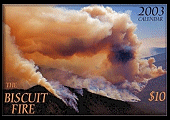




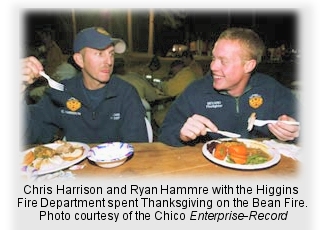
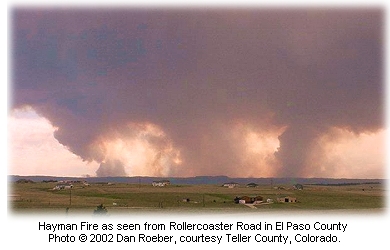 That was one of several findings released in a 200-plus page report last week, according to the
That was one of several findings released in a 200-plus page report last week, according to the 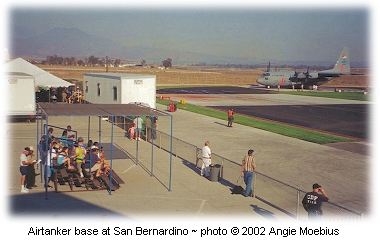 Recent rains have provided enough moisture to lessen the threat of wildfire around the state, according to a report by the
Recent rains have provided enough moisture to lessen the threat of wildfire around the state, according to a report by the 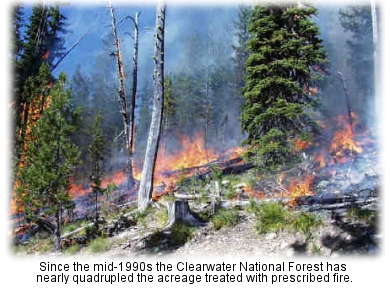 "Exceptional," says Forest Supervisor Larry Dawson.
"Exceptional," says Forest Supervisor Larry Dawson.
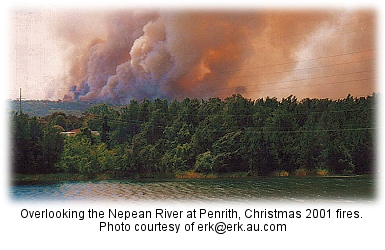 "We have got 94 fires burning across the state, with our main focus on Cessnock, Gloucester, and northern areas," she said.
"We have got 94 fires burning across the state, with our main focus on Cessnock, Gloucester, and northern areas," she said.
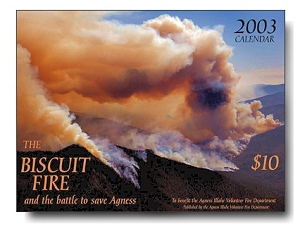
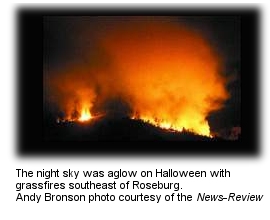 The Douglas Forest Protective Association said the fires were on hilltops east of the Southgate shopping area.
The Douglas Forest Protective Association said the fires were on hilltops east of the Southgate shopping area.
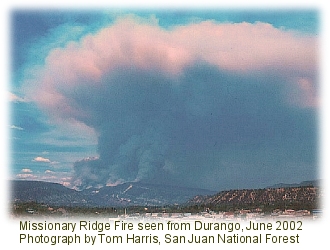 "I don't think there's any way we could give you any sort of definitive date," Wilson said. "There's a possibility that there's still some stuff smoldering. We may see some smoke next spring."
"I don't think there's any way we could give you any sort of definitive date," Wilson said. "There's a possibility that there's still some stuff smoldering. We may see some smoke next spring."
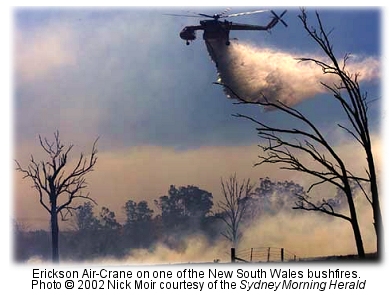 The fire in New South Wales burned 600 hectares (1483 acres), according to the
The fire in New South Wales burned 600 hectares (1483 acres), according to the 